material
Latest
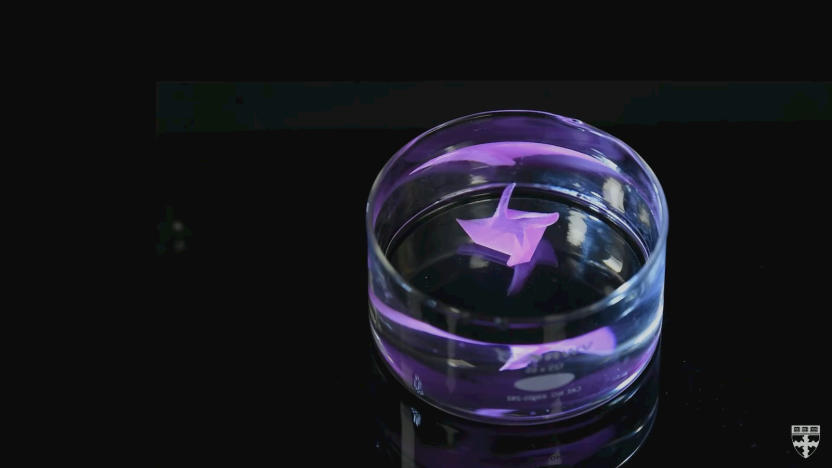
Harvard created a wool-like 3D-printable material that can shape shift
Researchers believe it could reduce waste in the fashion industry.
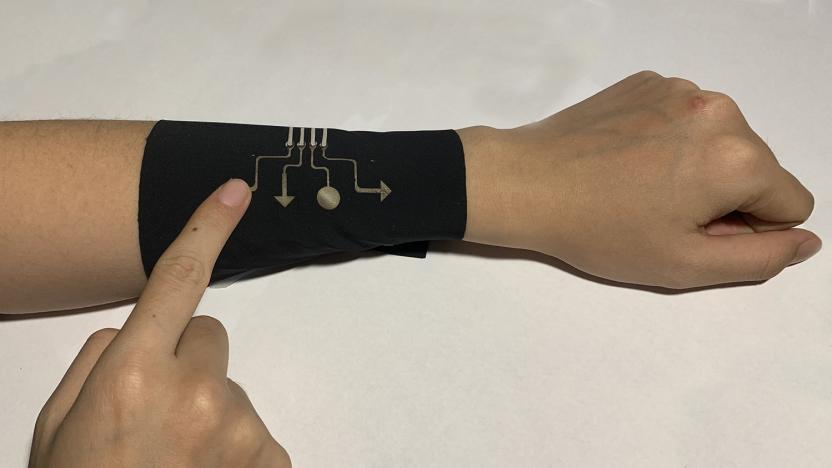
Researchers control a game of Tetris using a breathable wearable sleeve
Researchers created an ultrathin, stretchable, breathable electronic material for more comfortable wearables.
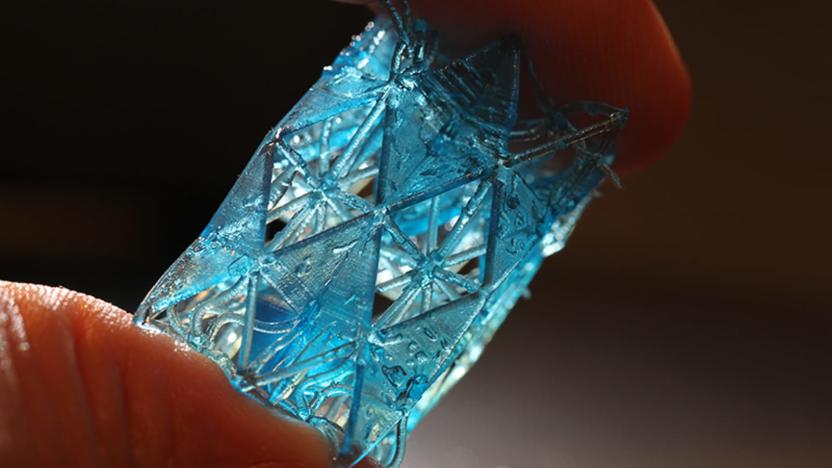
Researchers create bone-inspired 3D-printed building materials
You may not think of your bones as buildings, but researchers do. A team from Cornell University, Purdue University and Case Western Reserve University believes that by studying the internal structure of bones, they may be able to 3D-print stronger construction materials for homes and buildings.
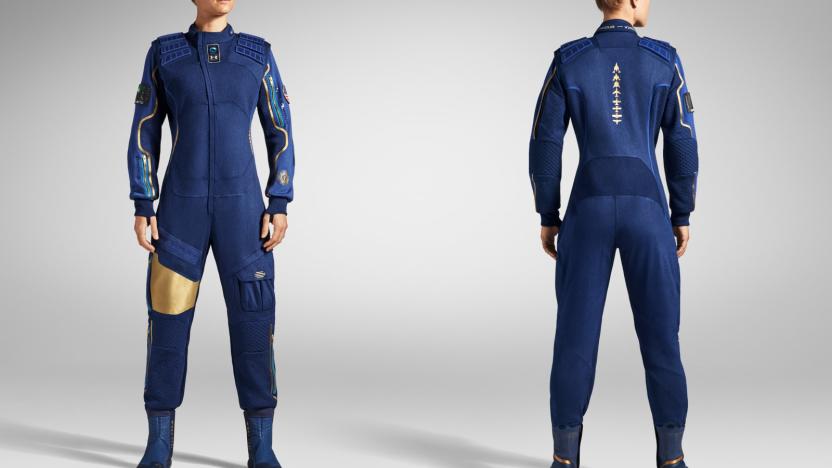
Virgin Galactic passengers will wear these Under Armour spacesuits
Yesterday, NASA revealed the spacesuits its astronauts will wear on future Moon and Mars missions. They're impressive but clunky and a little heavy-handed on the patriotic theme. As you might expect, commercial space travel will be a bit more stylish. Today, Under Armour unveiled the space gear -- a base layer, spacesuit and boots -- that it's designed for passengers on Virgin Galactic flights.

A worldwide material shortage is delaying cassette production
Just when cassette tapes appeared to be making a comeback, a worldwide shortage of gamma ferric oxide has slowed production. National Audio Company (NAC), the largest cassette tape manufacturer in the US, sent a letter to its customers explaining that, due to the shortage, it is unable to fill orders on its usual 30-day schedule. Instead, it's working as fast as the raw material arrives.
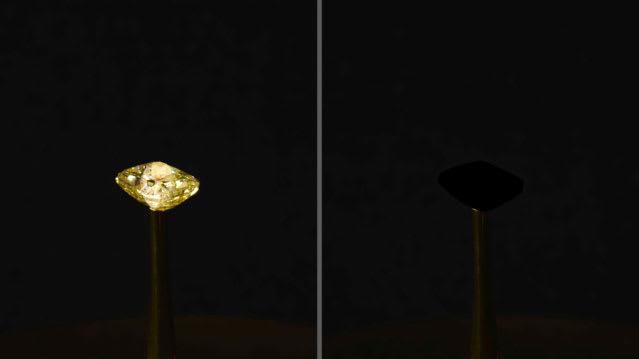
MIT scientists accidentally create the blackest material ever
Good news for goths -- black somehow just got even blacker. MIT engineers have cooked up a material that's 10 times blacker than anything else previously reported. Capturing more than 99.995 percent of any incoming light, the material is made of vertically aligned carbon nanotubes (CNTs) grown on chlorine-etched aluminium foil. And it was discovered by accident.

Self-healing 3D-printed gel has a future in robots and medicine
Robots might be a little more appealing -- and more practical -- if they're not made of hard, cold metal or plastic, but of a softer material. Researcher at Brown University believe they've developed a new material that could be ideal for "soft robotics." It's already demonstrated that it can pick up small, delicate objects, and it could form customized microfluidic devices -- sometimes called "labs-on-a-chip" and used for things like spotting aggressive cancers and making life-saving drugs in the field.

Watch this self-healing material handle a bullet
NASA-funded research has created a material that could self-heal in seconds. Two layers of solid polymer sandwich a gel that with an ingredient that solidifies on contact with air (i.e. when one or both of the outer layers is damaged). This differs from other approaches that rely on a mostly-liquid compound, or similar, slower techniques. The protective applications in space craft (like the ISS) are obvious, and could add a vital line of defense against dangerous debris. The ISS already has shields to protect it, but reactive armour in the event of damage would be even more reassuring. Back down here on earth, the same material could be used in cars, pips, containers and even phones (beyond scratches). Watch the material get shot and self-heal in the video below.

3D-printed material can carry 160,000 times its own weight
Researchers from MIT and Lawrence Livermore have created a new class of materials with the same density as aerogels (aka frozen smoke) but 10,000 times stiffer. Called micro-architected metamaterials, they can withstand 160,000 times their own weight, making them ideal for load-bearing, weight-sensitive applications. To do it, the team created microscopic lattice molds using a 3D printer and photosensitive feedstock (see the video below), then coated them with a metal 200 to 500 nanometers thick. Once the lattice material was removed, it left an ultralight metal material with a very high strength-to-weight ratio. The process also works with polymers and ceramics -- with the latter, they created a material as light as aerogel, but four orders of magnitude stiffer. In fact, it was 100 times stronger than any known aerogel, making it ideal for use in the aerospace industry. Given that it was funded by DARPA, it could also end up on robots, drones or soldiers.

Flipboard competitor Material goes live
Flipboard (and Google Currents, et al) competitor Material has gone live in the App Store. From a quick glance, Material look like just another magazine-type newsreader, but Material has tackled one of the biggest annoyances about newsreaders that others haven't: the setup. With most newsreaders, the first time you launch the app, you need to tell it what types of news you are interested in and from what sources you like to get your news from. Material skips that mundane setup phase altogether by bringing you the content you want to read straight away. It does this by scanning your Facebook and Twitter feeds and sees the types of articles you like to read and the people you are following and adjusts your preferences accordingly. Of course, Material also does allow you to custom configure your news sources, but I suspect that many of its users (who are active on social media anyway) will find the app fine to use with its preselected sources based on your social media footprint. Material is a free download.

Material aims to outdo Flipboard by adapting to your changing interests
With the likes of Flipboard, Google Currents, Pulse and other magazine-style newsreaders competing for your attention, the folks at Inq Mobile are aiming to delight audiences by delivering personalized content from unexpected sources. As creators of one of the first Facebook phones, they're now leveraging their social roots with an app known as Material, which attempts to learn your interests by examining your Facebook and Twitter activity. You can still manually add content, but Material strives to eliminate the configuration hassles you'll find elsewhere. Instead, its developers are reckoning that you'll appreciate a greater variety of news sources, and it can also adapt to your preferences over time by examining the type of stories you read. In all, Material serves up two editions of content daily, which includes blog entries, videos, music, photos and news articles. It's now available for free on iOS, and joined by an updated release of the Android app. If you've yet to check out Material, it could be worth installing just to see just what it thinks you like.

German researchers create smudge repellent coating from candle soot
While they're working on the lack of feedback, and need for exposed skin problems for touch screens, that other gripe -- dirty smudges -- could soon be wiped-out permanently. Researchers from the Max Planck Institute for Polymer Research in Mainz obviously had enough of sleeve-cleaning their devices and created a coating that could usher in a smudge-free world. The discovery comes after the team applied candle soot to glass and then coated it in silica to keep it in place. The glass is then heated to a bratwurst-baking 600 ºC for calcination, which makes the soot transparent -- somewhat handy for screens. To test, different oils and solvents were applied, but the glass' superamphiphobic properties soon fended them off. A resilient coating sounds a little more straight-forward than what Apple recently applied to patent, but until either of these see the light of day, you'd better keep that Brasso close by.

Self-strengthening polymer nanocomposite works best under pressure
No one keeps carbon nanotubes down -- especially not these guys. The always popular allotropes have been enlisted by researchers at Rice University to create a composite material that gets stronger under pressure. When combined with polydimethylsiloxane, a rubbery polymer, the tubes form a nanocomposite that exhibits self-strengthening properties also exhibited in bones. During testing, the team found the material increased in stiffness by 12 percent after 3.5 million compressions. Apparently, the crew is stumped on why it reacts this way, but is no less eager to see it working in the real world -- discussion is already underway to use the stuff as artificial cartilage. And here we thought aerogel was cool. Full PR after the break.

Jonathan Ive on Apple's material obsessions
Core77 had a chat with Apple's Jonathan Ive about the iPhone 4 and the materials that it's made out of, and Ive says that the process is very holistic; Apple has really gone from start to finish with the types of metal and glass that make up the latest iPhone, and they've worked at every step of the process to try to make them better designed. He says that the glass on the front and back is "scratch-resistant aluminosilicate glass," and the metal around the edges is one full band of stainless steel. (The "seams" are just cosmetic -- it's all one piece, apparently.) "That understanding, that preoccupation with the materials and processes," Ive says, "is essential to the way we work." Ive does have his usual ethereal lightness about how hard design is to grasp. "You cannot disconnect the form from the material -- the material informs the form," he says. If nothing else, though, the interview definitely shows just how obsessive he and Apple are about designing and manufacturing these devices. iPhones become commonplace so quickly after launch that you tend to forget all of the work and thought that has gone into every single feature of their hardware. Apple isn't really doing anything magical here; it's just sitting down and grinding out exactly what materials work best in which ways in order to make a really beautiful and functional object. [via 9to5Mac]

Steve Jobs of interviews past
Steve Jobs is going to appear at the latest All Things Digital conference, and to celebrate the rare appearance of the CEO outside of an Apple event, All Things Digital has posted a few historic interviews with Jobs from conferences past. The first is from 2003 (also posted after the break on this post), and Kara Swisher will be posting the others weekly up until the new conference. None of it is new material, obviously, but it's very interesting to see Jobs' thinking a few years ago, knowing what we know today about what Apple was hoping to do with the iPhone and, now, the iPad. If you don't want to wait for Swisher to post the latest ones, you can check out our posts from when the events actually happened. He, of course, denies that Apple is working on a tablet (would the Internet have believed it if he'd told them about the iPad anyway?). However, when he talks about a personal computer as a content hub and how it is "integral to our digital lifestyle," you can see flickers of the vision that he had of us sitting on the couch, receiving the world through this book-sized device. These interviews probably aren't for everyone. For those of you who are interested, not only in what Apple is doing next but also in what they were doing "next" five years ago, they are definitely worth a watch.

Black silicon is poised to improve digital imaging, maybe solar panels
We're big fans of silicon, but it turns out the stuff has been slacking off, and all it needs is a little nudge from sulfur hexafluoride and a high-powered laser to start working harder. When it gets that nudge it becomes a new material called black silicon that's between 100 and 500 times more sensitive to light -- including, amazingly, infrared. Some of the folks who accidentally invented black silicon started a company called SiOnyx, and with $11 million in venture financing, they're trying to commercialize it -- first for night vision and later for digital cameras, medical imaging, and maybe even solar cells. The benefits are obvious, but like a lot of other future miracle technologies we've heard about, it's still just science fiction to consumers until a solid deal is struck to bring it to market. [Via Slashdot]

Rock Band Weekly: The Material, The Myriad, Them Terribles and Maxmo Park
Many folks may not recognize the bands in this week's Rock Band Weekly. That's okay, though, since we've placed some handy-dandy videos after the break to keep you informed. In fact, we're going to watch them right now. Who are these people?MTV2 pack (240 Microsoft Points / $3) "Moving to Seattle" - The Material (80 MS Points / $1) "A Clean Shot" - The Myriad (80 MS Points / $1) "Bullets & Guns" - Them Terribles (80 MS Points / $1) Individual song "Girls Who Play Guitars" - Maxïmo Park (80 MS Points / $1) The tracks will be available to download next Tuesday and Thursday for Xbox 360 and PS3, respectively.

Timing, money among reasons for channels getting HD treatment
Pixel for pixel, we'd take MOJO HD over TBS HD everyday of the week. Why? Because 100-percent of the content aired on the former is in gorgeous high-definition, while the vast majority of material shown on the latter is in ghastly stretch-o-vision. For those that have wondered why certain channels get HD treatment and some don't, Sound and Vision has taken an in-depth look to unearth the reasons why seemingly worthless networks such as QVC have an HD channel lined up while scores of HD junkies can't get their carrier to land SciFi HD, USA HD or dozens of other channels with worthwhile high-def programming. Needless to say, timing and money rank pretty high on the list, but other conveniences such as simulcasting and having loads of "pretty" content available helps nets "jump the line." Hit the read link for the full spill.

Researchers develop sticky gecko-like material
Researchers at BAE Systems' Advanced Technology Centre in Bristol seem to have take a cue from Q's play book, developing a new synthetic material that could be used to create special wall-climbing suits for soldiers and spies. The material is designed to mimic a gecko's foot, which is covered with hairs so small that they form a bond with just about anything they touch, but can still be easily peeled off. In addition to human super-hero antics, the researchers say the material could also be used for wall-climbing robots. But the Brits aren't the only geeks that have turned to geckos for inspiration. As you may remember, some peeps at Stanford recently managed to not only replicate a gecko's sticky feet, but create a full-fledged geckobot.

More fun with Steve's NYC cube
The saga of the NYC cube continues. For the uninitiated, the cube in question is the huge, 5 story glass cube that will adorn the upcoming Manhattan Apple Store. Steve Jobs designed the cube, and is very much in love with it. According to a report at ifoAppleStore, the titanium pieces that hold the massive glass panels in place were recently replaced with a different material, at the request of Mr. Jobs who felt that the titanium pieces were ruining the aesthetic of the cube. Who knows how much of an extra expense this last-minute adjustment was.Steve really, really likes his cube.











